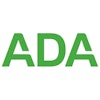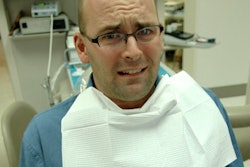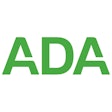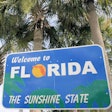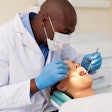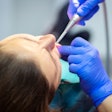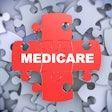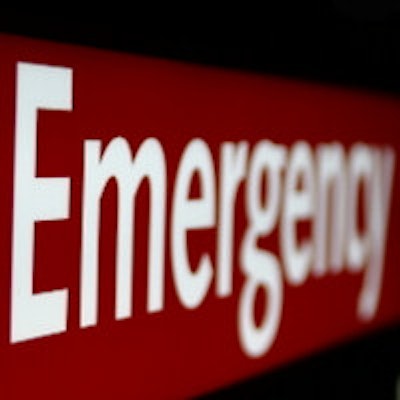
Expanded dental coverage through Medicaid and an increased number of dentists were not associated with fewer visits to the emergency department (ED) by patients with nontraumatic dental conditions in 2010, according to a new study in Health Affairs (August 2015, Vol. 34:8, pp. 1349-1357).
The study results cast into doubt that the idea of providing expanded dental benefits through Medicaid would, in and of itself, improve access to dental care.
"One might expect that increasing the supply of dentists and Medicaid dental coverage would lead to less ED use for dental conditions. However, in urban counties where over 90% of dental ED visits occurred, we did not find that to be true," lead author Kathryn Fingar, PhD, MPH, told DrBicuspid.com in an interview.
"Rates of dental ED visits made by patients with Medicaid remained high in urban areas, even in states with expanded dental coverage through Medicaid and in counties with an adequate number of dental providers," stated Fingar, a research leader at Truven Health Analytics in Sacramento, CA.
Medicaid or no insurance
The researchers retrospectively looked at the data for more than 870,000 nontraumatic dental ED visits in 29 states by adults ages 20 to 64. Nontraumatic conditions were defined as caries, tooth pain, and gingivitis. Injuries that resulted from traumatic events, such as wounds and broken teeth, were excluded from the study. If a patient made multiple visits to an emergency department, researchers counted each visit separately.
"Emergency department data can be used as a window into the healthcare resources of a community, and these indicators can be used to flag potential healthcare quality problems that need further investigation," Fingar stated.
Almost 31% of the visits analyzed were paid for by Medicaid. Of the non-Medicaid visits, 62% were by patients with no insurance of any kind, and 8.5% of the visits were paid by Medicare. Almost a quarter of the visits were paid by private insurance.
More than 90% of Medicaid-funded ED visits occurred in urban counties, the researchers found. In contrast, in rural counties, a lower rate of dental ED visits corresponded to a higher density of dental providers. This practitioner-density finding was not repeated with urban counties.
In states that provided expanded dental coverage through Medicaid, the rate of these ED visits was lower compared with those states that provided emergency-only or no Medicaid dental coverage.
The authors listed the following possible explanations for the findings:
- Constraint in the supply of dentists who accept Medicaid
- The presence of other service options for patients seeking dental care, such as those available through some federally qualified health centers
- Excessive travel costs associated with dental care outside the ED
- A continued pattern of ED use despite having insurance
Possible solutions
As the American Dental Association estimates that more than 8 million Americans will be eligible for dental coverage through the Medicaid expansion under the Patient Protection and Affordable Care Act (ACA), more research is needed to understand whether this will lead to an increase in office-based dental care and a decrease in ED use for dental conditions among these individuals, Fingar wrote that.
"Without more dentists who will accept Medicaid, this coverage expansion may not result in reduced ED use for dental conditions," she stated.
To reduce ED use for dental conditions, Fingar and co-authors suggested some possible solutions, including the following:
- Establish onsite dental clinics in emergency rooms.
- Expand dental coverage using less expensive telehealth and midlevel dental providers who are not dentists but are trained to perform preventive and restorative care, such as fillings and minor extractions.
- Incentivize payors or providers to offer or refer patients to preventive dental care, similar to colon and cervical cancer screenings routinely offered today.
"There is a high need and high demand for dental services, including among Medicaid beneficiaries, and not enough dentists accept Medicaid coverage," Fingar stated. "Just as with Medicaid reimbursements for other healthcare services, reimbursements for dental services by Medicaid are lower than by other payors, but Medicaid beneficiaries deserve access to care."
Possible incentives could include loan forgiveness for providing services for low-income individuals, she noted.
"Otherwise, the delivery system will need to come up with other solutions, such as embedding midlevel dental providers in clinics or other sites of care that serve low-income individuals (including Medicaid beneficiaries) that can then bill Medicaid for these services," Fingar stated. "Coverage is a necessity, but it must be coupled with access to care."



